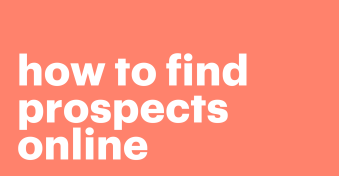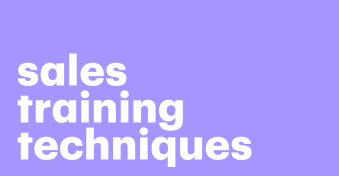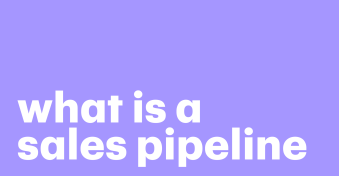Sales reps love nothing more than the feeling you get right after closing a successful deal. It’s a natural high like no other.
If you can’t get enough of that winning feeling then look no further; we’re going to go over the best sales closing questions to help you seal more deals.
What are closing questions in sales?
Sales closing questions are phrases asked near the end of a sales negotiation.
They’re used to inform the customer and help you get closer to your deal.
They help give a lasting impression of the company and the product it’s offering to drive the decision-making process.
Closing questions also direct the prospect toward agreeing on the final terms of a deal.
If they agree, the deal is finalized by the signing of a contract.
Why are closing questions important?
Closing questions in sales are important because they keep a prospect moving toward a sales conversion.
Open-ended questions give the salesperson one last chance to address any pain points or objections.
When closers better understand the customer’s needs, they’ll be much more likely to close the deal.
Closing remarks also give your sales team a chance to summarize your brand and the benefits of your products or services.
And closing questions help initiate the final negotiating process to reach an agreement for a sale.
That process of negotiating with a prospect is one PandaDoc can help you streamline and speed up.
Pre-built, customizable templates and real-time reporting and notifications on proposal activity free up your sales team to hone their craft.
Like choosing between the different sales closing techniques.
Most common sales closing techniques
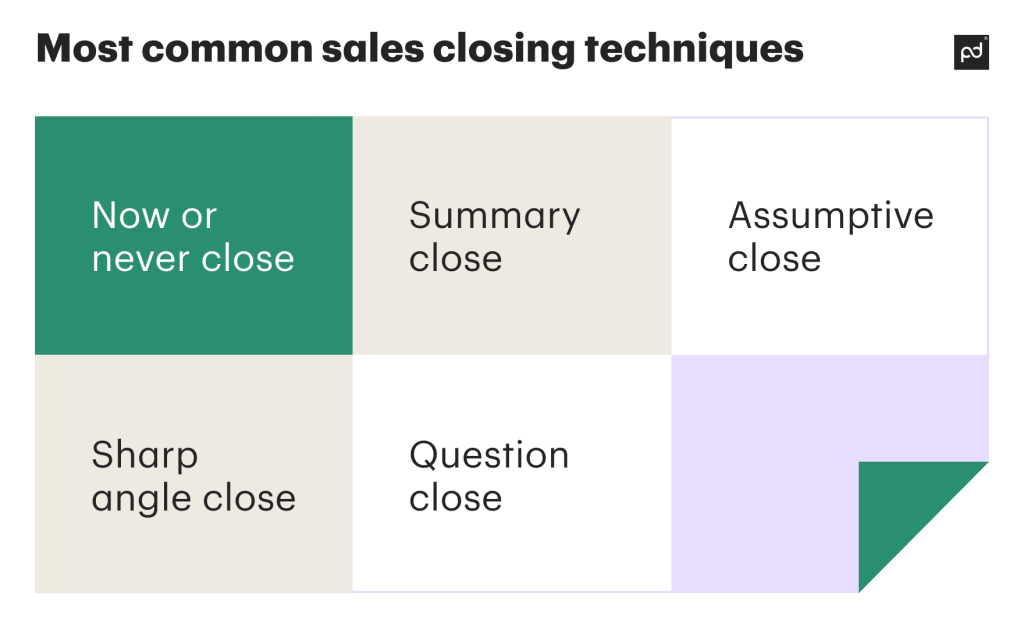
When it comes to how to seal the deal, there isn’t a one-size-fits-all solution.
The techniques you employ will depend on the product, vertical, customer, and other factors.
You aren’t exactly cold calling during a closing conversation – you should be using a sales strategy suited to the moment:
1. Now or never close
Also known as the takeaway close, the now or never approach leverages urgency to gain conversion.
You’re offering the client a deal for a limited time, but you can’t guarantee it will still be on the table after the deadline has passed.
In fast-moving industries, this allows you to capitalize on a customer’s fear of missing out (FOMO).
This approach works well if you know a prospect is interested and there’s a deadline approaching.
Maybe they need to hire your consultative services for an event or some other time-sensitive reason.
The now or never close gently pushes a customer to sign an agreement in the moment and rest assured that their needs have been met.
As you can imagine, this closing technique will not work if a sense of urgency is not present.
It’s up to your closers to understand the prospect and whether this type of close is appropriate.
2. Summary close
The summary close may not be the most exciting, but as a soft close, it often gets the job done.
As you might have guessed, it involves giving the prospect a complete big-picture view of your brand, products, benefits, costs, and other important information.
As this is a “summary”, you don’t want to overwhelm the customer with too many details.
Focus on the key features of your services and how they address the prospect’s biggest pain points.
The summary should be given from the perspective of the deal being finalized.
Use specific terms like, “our service will connect all of your offices to the cloud by the end of the month so you can start saving money on IT infrastructure.”
In this way, the prospect is already visualizing the post-sale effects.
The summary close works well in face-to-face situations like virtual meetings as well as traditional sales calls. Here are five tips to help you close more sales over Zoom.
3. Assumptive close
There’s a popular saying about those who assume (about making something out of you and me?).
However, when it comes to sales, the assumptive close is an effective sales technique.
This is because it puts the prospect in a position where it’s not if they will buy but when. And the assumption of the when is now.
In other words, this approach is for the times when you’re fully confident of the prospective client’s intent to buy your product.
The assumptive close can easily overlap with the summary close as seen in the last example.
During an assumptive close, use closing phrases such as “we’ve agreed” and “we’ve planned” and so on. This already puts a partnership between you and the customer in mind.
It’s a bit of psychological play, but after all that discussion of what “we’re” doing, how can the client not sign?
4. Sharp angle close
The sharp angle close is also known as the discount close.
This type of close is suited to handling objections having to do with cost and can speed up a slow sales cycle.
However, businesses like yours can’t simply offer a discount to close every deal.
The sharp angle close is an attempt to edge out the competition and build trust with a new client or customer.
To use this promotional technique, the closer must go into the meeting anticipating objections (especially with pricing) and have a pre-approved offer ready to go.
Seasoned sales professionals will know which prospects are going to ask for a discount and be ready for a quick response.
Once an offer has been made, it’s best practice to switch to a now or never approach.
That is, “Sure, we can give you a discount but we need you to sign the contract today.”
5. Question close
In an article where we’re talking about sales closing questions, it would be a considerable error to overlook the art of the “question close”.
Of course with any type of closing technique, you’ll be asking some questions.
The question close approach differs in that you build the entire close from one question to another.
This strategy lets you gain as much information as possible and clarify any pain points that may need to be re-addressed.
As you ask questions to confirm understanding between both parties, you’ll be heading towards a logical conclusion.
Your capstone question will be something like “Does this contract (or product) suit your needs and meet your satisfaction?”
When they affirm the question, you have a natural way to move on to the signing of the contract and closing the deal.
Best closing questions in sales
As you can see, there’s diverse sales training, techniques, and opinions on how to improve sales performance.
Whichever combination of approaches you opt for, you will need to arrive at the meeting prepared with the right questions.
What are the best closing questions in sales?
Well, there isn’t a magic bean that will grow your business to the heavens.
Instead, you must arm yourself with an array of the best closing questions if you want to get a prospect’s ink (or digital signature) on that contract:
1. Which of these two options would you prefer?
Customers always like options.
Whether it’s product features, payment plans, delivery terms, or other details, people like to feel they have the power to choose.
As a professional closer, asking a question such as “do you prefer delivery on Tuesday or Thursday?” let you guide the sales call while letting the client have some choice.
You see, you could ask “when would you like the item delivered?”, but that type of open-ended question may lead you to an abandoned purchase.
The option-based question doesn’t give the prospect a chance to respond in any way that doesn’t assume the deal has already been made.
2. What do you think?
Asking prospects what they think is beneficial for several reasons.
First, it helps to keep the potential buyer engaged with the sales call or meeting.
It also helps you to better understand any potential objections or other issues that could hold up the sale.
Lastly, it shows the client that you’re concerned about them and how they think and feel about the product or services your company offers.
This demonstrates that you’re not just focused on the sale but on helping the client solve a problem for themselves or their business.
3. Do you have any queries?
Whether you’re going for a summary close or a sense of urgency close, it’s important to make sure you hit on the most pressing issues for the prospect.
How do you ensure you accomplish that goal?
By asking the customer if they have any questions, of course!
Giving a potential customer a slot to ask questions at the end of your presentation is an absolute must.
However, it’s a good idea to ask for queries several times as you move through each section of your close.
Good sales professionals are always prepared to adjust an approach to fully answer any client’s questions.
Make sure you focus on their concerns as you continue moving forward with the deal.
If you’re not fully prepared to answer a question or concern, be prepared to follow up with a sales call.
In this event, your effort has turned into that of prospecting. Read our guide to learn effective sales prospecting tips.
4. Do you need this functionality or that?
Discussing functionality is especially important if you’re a SaaS business or offer IT solutions.
But even if you’re selling laptop bags, you can use features and capabilities as transition statements to help close the deal.
This is accomplished by asking an option question as mentioned before (only in this case the subject matter is more specific).
Going with the laptop bag example you could ask a question like “Do you need laptop bags that are TSA-approved or EU-compliant?”.
Now here comes the kicker; you’ve given them a choice and they’ll answer with the most preferred functionality.
What the client doesn’t know is that your product covers both options.
Once you let them know, you’ll have demonstrated the value of your product and nudged them closer to sealing the deal.
5. Can you see any advantages to that?
Perhaps the most important part of the sales process is for you to explain how your product benefits the customer.
In B2B sales, you might be offering a competitive advantage or cost savings.
Or for more traditional customers you might be saving them personal time or money.
Obviously, the possibilities are endless, but you need to help the prospect understand the advantages you’re trying to sell them.
After going over your unique selling points (USPs) and the associated benefits, simply ask a question like “Do you see the advantages in using our product?”.
After they nod their heads, you will be able to move on to the next benefit and rinse and repeat.
This sets the customer up with a lot of positive affirmation and places them at the top of the sales rollercoaster – all that’s needed to proceed is the slightest of nudges.
6. Does that make sense to you?
A similar question to advantages/benefits is to ask if what you’re explaining makes sense to the customer.
Firstly, this gives you a chance to clarify any misunderstandings and avoid blowing a sale.
Secondly, by asking “does this make sense to you?”, you’re putting the prospect directly into the line of questioning.
If they follow your logic, then yes, it does make sense to them.
And they can’t help but think that if what you’re saying makes sense, then they would benefit from signing that contract and closing the deal today.
7. What are your impressions of the product/service?
Earlier in a close, you need to gain an understanding of what the client knows.
Understanding how informed (or misinformed) they are is part of good sales prospecting.
Depending on where they get their information, they may come to the meeting misinformed about your company and its products.
Ask what the client has heard or read about your product.
This will give you a heads-up on any preconceived ideas and let you correct any “fake news” about your brand and the services you offer.
Depending on how the prospect answers the question, you’ll be able to tailor the rest of the pitch to meet their needs.
8. Why do you require that specific feature?
Sometimes clients get hung up on a specific feature or two when looking to make a purchase.
In many cases, they’ll have objections to a sale if they perceive that your offering lacks these prioritized features.
The only solution is to do some digging and ask the prospect why they require the specific feature in a product.
This gives you a chance to deliver on how your product meets that pain point with the features it has.
For example, let’s say you sell desktop PCs and laptops.
The customer is concerned about not having OSX as opposed to Windows.
Upon further questioning, you learn the main reason is that they want to use iCloud and Apple Music.
“That’s fine,” you state “because our Windows PCs come with software that lets you use your iCloud and Apple Music accounts.”
9. Is there anything else you need to know about this product/service?
Instead of simply asking the customer about “any” questions they might have, you can drive the conversation forward with a different approach.
Keep prospects focused on the pitch at hand by asking “is there anything else you need to know about our product?”.
This line of questioning keeps the customers’ attention on what you’re offering.
They may also have come to the meeting with specific questions about your product or service.
It may be about pricing, it may be about deliverability, or a wide range of details.
For all you know, they may need to run the specifics past a final decision-maker.
Either way, by asking clients what they need to know, you can streamline the process of your final pitch.
10. Is this what you were searching for?
Sometimes it pays to be assertive and blunt when attempting to close a deal.
After going through your sales pitch and answering questions, it’s time to nudge the prospect to the end of the funnel.
How do you do that?
By asking a direct question such as “is this the product you are searching for?”, you are getting the customer to openly admit whether or not your offering meets their needs.
If they answer yes, then there is only one thing left to do (sign on that dotted line).
Make sure you have a contract ready for when the client says yes and read our guide on how to write a sales proposal.
Tips for faster closings
One way you can close deals faster is by introducing your sales team to PandaDoc.
Our platform makes it easy to create and send quotes and proposals, as well as to get them eSigned after agreement.
Asking the right closing questions, too, will get you on the right track toward those agreements. But you can also fine-tune your closing conversations by following these sales tips.
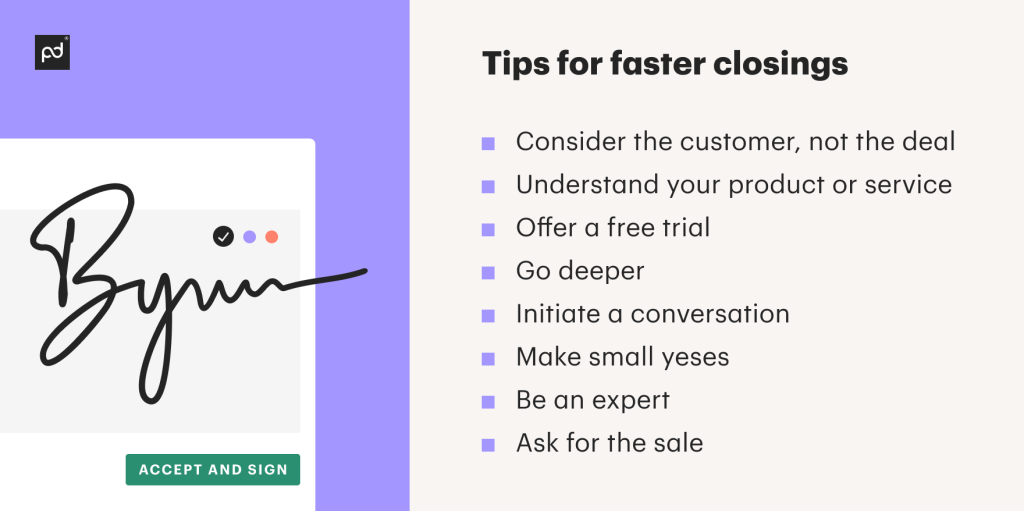
1. Consider the customer, not the deal
Many of us gravitate to sales because of its beautiful simplicity.
KPIs track the results and commission-based positions mean that more success means more money for us.
Unfortunately, this means we can gain a laser focus on closing deals and not closing the customer.
When entering a closing pitch, always remember that you’re trying to connect with the customer and meet their needs.
Your company is beginning a new and hopefully long-lasting relationship, so treat the negotiation as such.
If a prospect feels you’re putting them first, then the close will come quicker and more naturally.
2. Understand your product or service
Maybe it’s a no-brainer but as a sales expert, you’re expected to fully understand your product or service.
If you aren’t prepared for the questions and objections thrown your way, you can kiss a sale goodbye.
Not only does a lack of knowledge hurt your professionalism, but it also lowers any trust that a prospect may have in your brand to solve their problems.
Having a deep understanding of your product means you can break down technical terms and paint the bigger picture clearly.
The important thing is to ensure your key features get across to the customer with absolute clarity.
You can make sure everyone is on board using these tips on how to create a sales meeting agenda that improves conversions.
3. Offer a free trial
Sometimes a prospective customer needs an extra bit of convincing. No worries, you can always offer a free managed trial.
Free trials work much better if you’re offering a service like SaaS than say selling handmade guitars. However, some semblance of the idea can work in many product situations as well.
A managed free trial allows your team to guide the customer with the use of your service and make sure they experience the most useful features for them.
This type of offering can start the onboarding process, leading to a paying subscription.
4. Go deeper
Any good sales pitch should allow for ample back and forth between the two parties.
Sure, you’ll be explaining the benefits and advantages of your product to the customer.
You’ll also be answering their questions to the best of your ability.
You will likely head into the meeting with plenty of closing questions in mind, too.
However, don’t forget that you’ll also need to ask the customer questions to dig deeper into who they are and what they really need.
It’s better to take the time to fully understand a prospect than to make any assumption about what they’re looking for.
5. Initiate a conversation
For most of us in sales, we think of a closing pitch as a combination of sales techniques based on a flexible template.
Technically speaking, this would be the correct line of thought. However, you can be sure the prospect is expecting more than techniques and a sales template!
Remember, any sales meeting is a two-way conversation.
Try to keep things relaxed and conversational. Don’t be afraid to have some small talk as well as discuss their personal or business challenges.
During a sales conversation, you’ll gain better insights into potential customers that will help you close.
6. Make small yeses
Human psychology is a funny thing.
Once we start filling ourselves with positivity, we are more likely to agree with others.
A classic sales technique is to build from small commitments toward bigger ones until a transaction has been made.
We can follow that same logic within a single pitch meeting.
When asking questions, start with simple ones that you 100% expect to hear a yes from.
Questions like “are you looking for a solution to X problem?” or “do you understand X benefit?” will help get you on your way.
As the presentation progresses, so can your questions.
With each bigger “yes” your prospect will be primed for the affirmative when you ask “are you ready to sign today?”.
7. Be an expert
Understanding your company’s products and services is really the bare minimum.
If you want to close more deals you’ll need to commit to becoming an industry expert.
This means putting in your due diligence to research your competitors as well as every potential client.
You can drop nuggets of expert knowledge into your pitch and also while answering prospect questions.
This will help demonstrate your authority in the field and make all of your claims more believable.
At the end of the day, if the customer feels they can trust your brand, they’ll be ready to close the deal.
8. Ask for the sale
It may be stating the obvious, but a great piece of advice is to remember to actually ask for the sale.
You’re not trying to write winning sales emails here. Instead, you simply want to facilitate the closing of the sale.
We know you always plan on making the ultimate CTA.
However, sometimes, we get so absorbed in the wealth of information we’re sharing with our customers that we forget to prompt them for a close.
Many sales professionals will feel that the closing technique of their choice has implied the deal is done.
This may be the case, but you still need to give a customer that final slightest of nudges.
It may seem a bit blunt or aggressive but there’s no way to get a client to ink a deal without asking them to do so!
What to do after closing a sale
A close isn’t just a meeting to check off and a commission to collect.
It should be the start of a long-term relationship between the client and your company.
Your job doesn’t end with the closing of a deal, it really just begins!
Maintain your promises
The number one thing you need to do after closing a deal is to deliver on your promises.
If you agreed on a discount make sure that’s included in the pricing structure.
Or if you guarantee deliverables by a certain deadline, ensure that the customer success or onboarding team has signed off on the date.
If you burn a customer on a promise, you can kiss them goodbye.
Not only will they take their business elsewhere but they’ll tell other customers about their negative experience, tarnishing your brand reputation.
Express gratitude
Always remember to thank your customer for their business.
Show gratitude after that contract is signed by following up with the customer. A phone call or a visit can work wonders (when practical).
Don’t forget about email. Send a follow-up “thank you” or “welcome” email in a relatively short timeframe (two or three days).
This lets customers know your appreciation and that you’re available should any problems arise. You can even go a step further and combine a follow-up with a welcome email drip campaign.
Keep focus
Depending on the nature of your company and product sales cycle, you may feel the urge to celebrate after closing a deal.
While this is tempting, it’s nothing more than a distraction to business as usual.
Sales professionals like yourself know that any sale can be the beginning of a hot streak.
While you’re “on fire”, it’s best to take those good vibes and apply them to the next deal on your itinerary.
Don’t worry, you’ll have time to celebrate on the weekend!
Search for referrals
You don’t have to maintain a friendly relationship with your customers purely out of the kindness of your heart.
Your loyal clients are also your best source of referrals. Leads generated from customer referrals are some of the highest quality leads.
Better leads add another avenue for you to use a sales pipeline to boost revenue.
You never know when a customer might bring in a potential buyer, but you can always simply ask for referrals!
A quick call or an email to say hi and ask for referrals will do the trick.
Even if the client doesn’t have one immediately, they’ll hopefully keep an eye out for referrals in the future.
Try to upsell
Once a deal has been closed, both parties will be in an elevated mood about this new and promising partnership. Such camaraderie provides a great opportunity to upsell your products and services.
Upselling can be done as part of a follow-up or customer onboarding. During this time, customers will be experiencing firsthand the benefits of your service.
There’s no greater time to suggest a few add-ons that will drive those benefits even further.
To make things even easier, you could use PandaDoc CPQ to pre-configure an upsell quote for suitable new customers.
That means your sales team can have a suitable quote on hand to strike while the iron’s hot after they close that first deal.
Ask for feedback
Another important facet of post-sale interaction is to gain feedback from your new customers.
A follow-up survey sent via email will give you and your team a greater understanding of how the closing process is going.
Take client feedback and gain valuable insights into how to improve the overall experience for prospects.
You can also use customer feedback to gather testimonials about the way your company conducts business and closes deals.
Before you start closing more deals, you can try one of our free sales email templates that generate leads today!
Close more deals by asking the right questions
Sales professionals like you want nothing more than to close every single deal they encounter.
While that may be overly optimistic, you can surely improve your win rate by asking the right sales questions.
Use the closing techniques described above and test them out for yourself.
Not only will you close more deals, but you’ll also be building better relationships with your clients.
PandaDoc for sales can give you more time to concentrate on your closing questions and other sales-critical activities, by speeding up your sales process and automating time-consuming tasks.
Schedule a demo to learn more.
Disclaimer
PandaDoc is not a law firm, or a substitute for an attorney or law firm. This page is not intended to and does not provide legal advice. Should you have legal questions on the validity of e-signatures or digital signatures and the enforceability thereof, please consult with an attorney or law firm. Use of PandaDocs services are governed by our Terms of Use and Privacy Policy.
